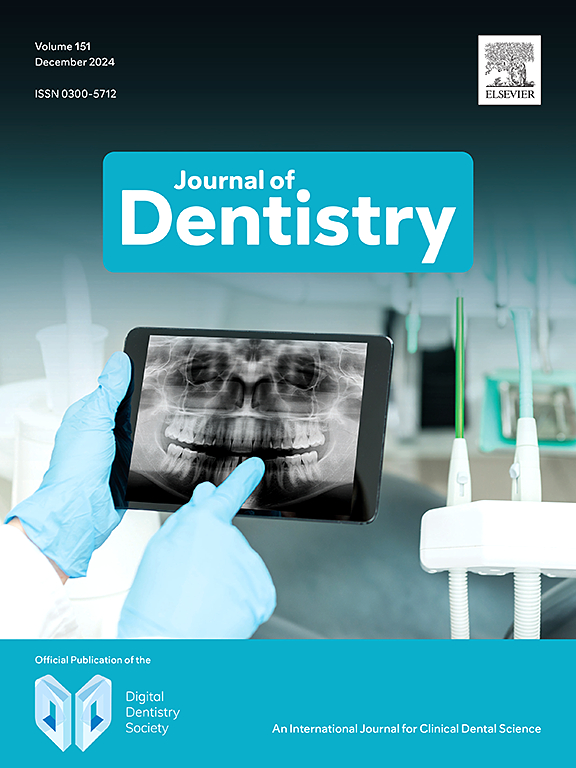The accuracy of direct digital impressions of post spaces with different diameters and depths scanned by a wireless intraoral scanner
IF 4.8
2区 医学
Q1 DENTISTRY, ORAL SURGERY & MEDICINE
引用次数: 0
Abstract
Objectives
To assess the accuracy of a wireless intraoral scanner (IOS) in scanning post spaces with different diameters and depths.
Methods
Six maxillary central incisors underwent endodontic treatment and tooth preparation. Post space preparation was performed using a #4 or #6 post drill to depths of 6, 8, and 10 mm, respectively. Direct digital impressions of the post spaces were scanned using an IOS (Trios 5, 3Shape, Copenhagen, Denmark) ten times as test data. Conventional impressions were also taken and subsequently scanned using a laboratory scanner to serve as reference data. The accuracy of the test data was evaluated through both 3D and 2D comparisons against the reference data. Statistical analysis was performed using analysis of variance (α=0.05).
Results
As post space depth increased or diameter decreased, 3D root mean square (RMS) values increased, ranging from 65.7 μm to 82.8 μm (p < 0.001), while the proportion of green region (indicating a deviation within 0.1 mm) decreased from 90.05 % to 76.38 % (p < 0.001). 2D RMS values gradually decreased from the cervical to the apical region. Except for the apical region in the #4 drill group with a 10 mm depth, all 3D and 2D RMS values remained below 100 μm. Furthermore, only the post space with a 10 mm depth in the #4 drill group exhibited a proportion of green region <80 %.
Conclusions
The accuracy of the wireless IOS in post space scanning was significantly affected by both depth and diameter, and decreased with increasing depth or decreasing diameter. Furthermore, the accuracy diminished as the scan approached the apical region.
Clinical significance
When the depth of post space prepared with a 1.9 mm diameter drill is ≤8 mm or when prepared with a 2.25 mm diameter drill is ≤10 mm, Trios 5 is suitable for direct digital impressions.
求助全文
约1分钟内获得全文
求助全文
来源期刊

Journal of dentistry
医学-牙科与口腔外科
CiteScore
7.30
自引率
11.40%
发文量
349
审稿时长
35 days
期刊介绍:
The Journal of Dentistry has an open access mirror journal The Journal of Dentistry: X, sharing the same aims and scope, editorial team, submission system and rigorous peer review.
The Journal of Dentistry is the leading international dental journal within the field of Restorative Dentistry. Placing an emphasis on publishing novel and high-quality research papers, the Journal aims to influence the practice of dentistry at clinician, research, industry and policy-maker level on an international basis.
Topics covered include the management of dental disease, periodontology, endodontology, operative dentistry, fixed and removable prosthodontics, dental biomaterials science, long-term clinical trials including epidemiology and oral health, technology transfer of new scientific instrumentation or procedures, as well as clinically relevant oral biology and translational research.
The Journal of Dentistry will publish original scientific research papers including short communications. It is also interested in publishing review articles and leaders in themed areas which will be linked to new scientific research. Conference proceedings are also welcome and expressions of interest should be communicated to the Editor.
 求助内容:
求助内容: 应助结果提醒方式:
应助结果提醒方式:


